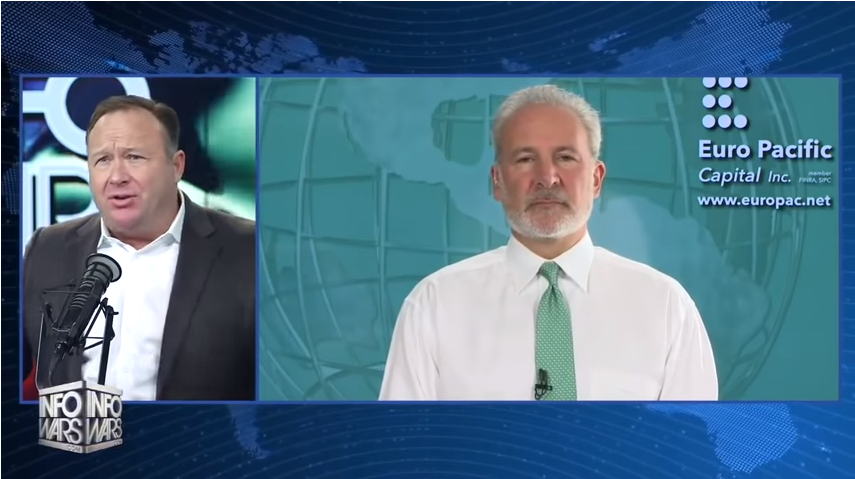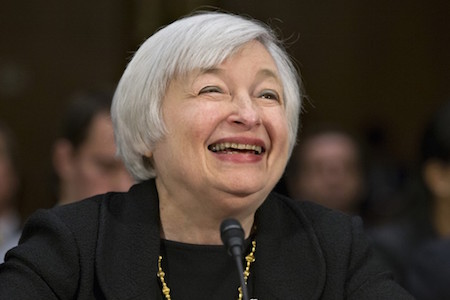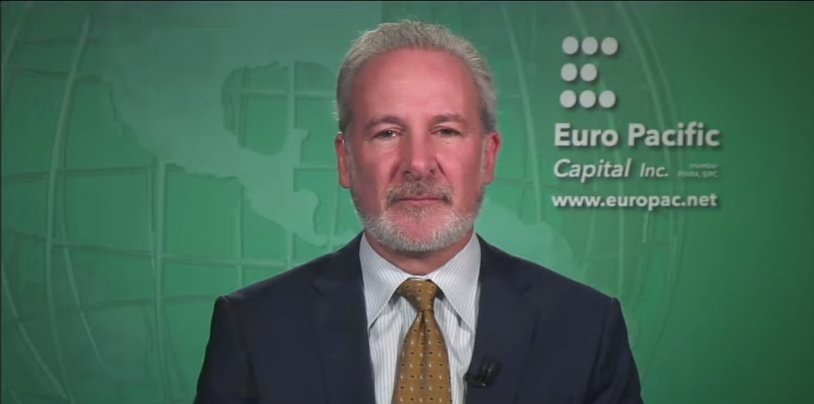The SchiffGold Friday Gold Wrap podcast combines a succinct summary of the week’s precious metals news coupled with thoughtful analysis. You can subscribe to the podcast on iTunes.
Peter Schiff recently appeared on InfoWars with Alex Jones and took on the notion that Pres. Trump is in the process of fixing the economy. In fact, Peter pushed back hard against Alex, saying we are on the verge of a crash and Trump is going to get the blame.
I agree with you. The economy is going to blow up. But it’s going to blow up like a bomb. It’s not a good thing. It’s a bad thing. Unfortunately, that’s what Trump has inherited from Obama. But it’s not even really just Obama. It’s the Federal Reserve. It’s the monetary policy that has been passed like a baton from Clinton, to Bush, to Obama, and now to Trump.
Peter predicted the collapse will happen under Trump’s watch. Peter has said in the past that Trump is not helping himself by taking credit for the soaring stock market. And when things go south, he’s going to get the blame.
He owns the stock market bubble. He and the Republicans own the economy now thanks to the tax cuts. They’re not going to make any difference, but they are going to give the Democrats a reason to blame it all on Trump and the Republicans.”
We’ve written extensively about the stock market bubble blown up by artificially low interest rates and Federal Reserve quantitative easing. But stocks aren’t the only asset bubble out there. In fact, 2017 may go down as the year of the bubbles. And the new housing bubble is one that seems to be floating under the radar.
Financial manager James Stack has noticed it. He predicted the housing crash in 2005, and he told Bloomberg the housing market is flashing red again.
It is 2005 all over again in terms of the valuation extreme, the psychological excess and the denial. People don’t believe housing is in a bubble and don’t want to hear talk about prices being a little bit bubblish.”
If you believe the conventional wisdom, gold should be languishing right now.
It isn’t. People are buying gold.
So, what gives? Could it be that the conventional wisdom is wrong?
The SchiffGold Friday Gold Wrap podcast combines a succinct summary of the week’s precious metals news coupled with thoughtful analysis. You can subscribe to the podcast on iTunes.
The stock market has continued its upward trajectory through the first two weeks of the new year. In fact, the market has only seen one down day since Jan. 1. Peter Schiff appeared on The Street and opened things up with a bang, calling investors “Oblivious.”
Peter reiterated a message he’s been preaching on his own podcast for weeks – despite what you see in the markets, the US economy is heading for a major crash. We’re partying like it’s 2006 – oblivious to what’s lurking right around the corner.
Peter also talked about China’s decision to cut back or end the purchase of US Treasuries, the Federal Reserve, Trump’s economy and Bitcoin during the interview.
Last month, we reported on a Bank of America survey that indicated the mainstream has started to acknowledge that the stock market is a big, fat, ugly bubble.
The latest fund-manager survey by Bank of America Merrill Lynch found that a record 48% of investors say the US stock market is overvalued. Meanwhile, 16% of investors say they are taking on above-normal risk. BoA chief investment strategist Michael Hartnett called this “an indicator of irrational exuberance.”
Now, even the government has taken notice, acknowledging asset prices are floating in dangerous bubble territory.
As we’ve reported, the US government is spending money like a drunken sailor. But nobody really seems to care.
Since Nov. 8, the US national debt has risen $1 trillion. Meanwhile, the Russell 2000 (a small-cap stock market index) has risen by 30%. Former Reagan budget director David Stockman said this makes no sense in a rational world, and he thinks the FY 2019 is going to sink the casino.
The December Federal Open Market Committee meeting went pretty much according to scrip.
Analysts widely expected the Fed to raise rates by .25. It did. Analysts also expected the Fed to signal three more hikes in 2018. It did that too.
Gold went up, as we said it probably would, hitting a one-week high in the wake of the rate hike as investors “bought the fact.”
The Federal Reserve is in the midst of inflating its third big bubble. During an interview with Greg Hunter last month, Peter Schiff said the third time isn’t going to be the charm.











